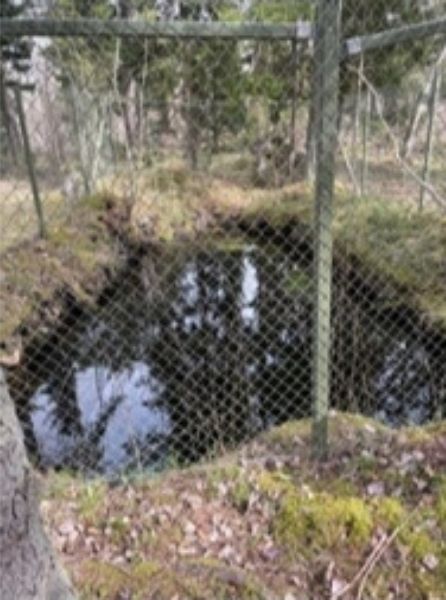
31. Gruvhål – Mine pits
At Bergboö on the old outskirts of Bergby there are about a hundred old mine shafts. Some mine shafts are preserved and fenced off to be visited in the current Häverö-Bergby nature reserve. Follow the signs.
Iron ore has been mined in Roslagen for hundreds of years, especially a little further north at Herräng. The landscape around Herräng is still characterized today by the long-standing mining operation through numerous mine shafts, spoil heaps and industrial facilities. The ore in the Herrängsfältet was very rich with up to 50% iron. The Eknäs mine, the largest mine, produced approximately 850 thousand tons of iron ore between 1833 and 1939. There are also many documented mines on Singö. The mine shafts here at Bergboö are not as well known. However, it is said that rich veins run underwater all the way to Singö.
In the 17th century, ore was mined by means of arson. Fires were lit on the rock, cold water was poured on and the brittle rock was broken with sledgehammers. Ore and ore (grey rock) were carted out by hand. A very laborious method. In the 18th century, black powder began to be used to blast the mines. However, the mines were not made very deep due to water intrusion and a lack of pumps.
After the Russian raids in 1719, when the ironworks were rebuilt, there was a shortage of ore. It was probably then that the hunt for iron ore on Singö and in Bergboö took off. The ore was shipped out from stone piers at Väddöviken, where traces in the form of stones and piles of rubble can still be seen. The mines in Bergboö probably ran out of steam and operations ceased in the mid-19th century.


